|
2007 - A Great Year for Astronomy:
2007 was a phenomenal year for astronomy - from naked eye comets to mapping of Dark Matter. Astronomy Magazine's January 2008 issue coverers their top 10 stories, most of which I won't cover in this entry. That doesn't mean that any one story is less important, most of them have already been covered in previous entries - like Comet McNaught, Titan's oceans, and New Horizons flyby of Jupiter.
While the Huygens probe landed with a "thud" and not a splash, the ocean real estate was detected by the orbiting Cassini probe.
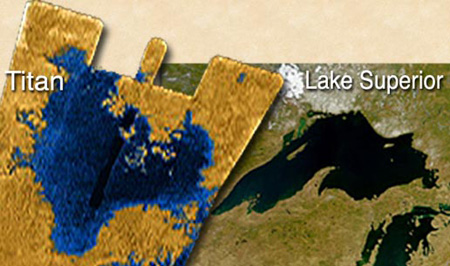
This image shows one of the many lakes, this one a bit larger than Lake Superior. Cassini used radar mapping to detect these methane-ethane oceans in the northern polar region.
Cassini has also given us some great views of Saturn's other moons, such as Iapetus.
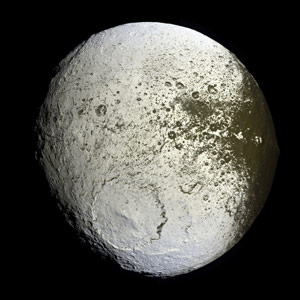
And some great close up's of the light and dark regions:
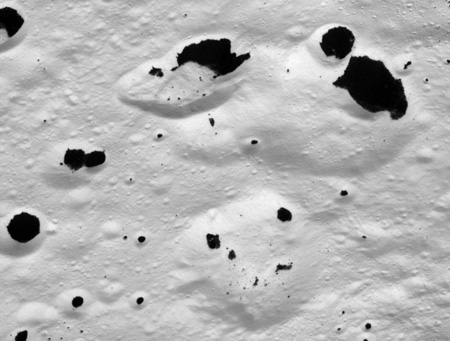
The dark material that covers part of this moon is thought to be methane leaking to the surface due to meteoric impacts. This methane would turn dark due to exposure to the Sun's ultraviolet radiation.
More images from Cassini can be found on the Cassini Multimedia website.
The New Horizons mission fly by Jupiter earlier in 2007 with the purpose of testing the instrument package.
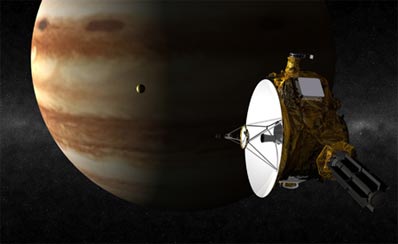
The result of the test is that for the first time the extent of Jupiter's magnetosphere has been measured - and it's huge.
The greatest strides this year are in the area of theoretical and observational astrophysics.
The smallest transiting planet was discovered in April 2007 orbiting the red dwarf GJ 436. Residing 30 light years from Earth, the planet is the mass of Neptune. Better still, the planet orbits within the stars "habitable zone," meaning that if this planet has liquid water, life could exist.
Astronomers at the Harvard-Smithsonian Center for Astrophysics settled the folk-lore regarding the merger of our Milky Way galaxy and M31 - the Andromeda Galaxy. The two galaxies will merge, with the first pass occurring in 2 billion years. The final merging will occur in 5 billion years and there is a 50% chance our Solar System will be cast away due to strong gravity interactions. The model is based on the known visual mass of both galaxies as well as Dark Matter.
Our Universe is 13.7 billion years old and the ESO's VLT has discovered the oldest star - 13.2 billion years old.
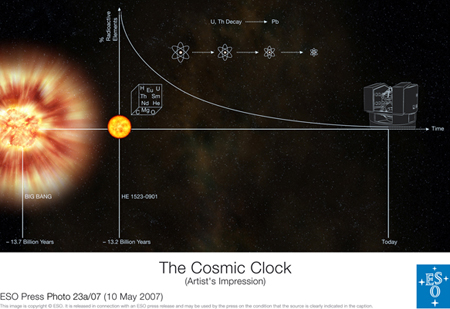
This star, designated HE 1523-0901, is important for several reasons. This stellar fossil's age was determined using several "clocks" of neutron capture - the decay of radioactive elements thorium, uranium, europium, osmium and iridium. This is the first time multiple elements were used to date a star. Because this star resides in our galaxy, we can also better determine the age of our galaxy - presumably at least 13.2 billion years old.
To look for old stars, astronomers look for stars with the least amount of iron - called iron-poor. These stars will have higher percentages of radioactive material that can be used to date these stars. Data from old stars can also assist astronomers in putting together better simulations of galaxy formation.
Voyager 2 is still sending back data from is Plasma Science Instrument.
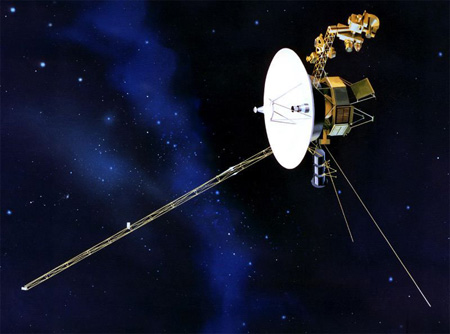
Several surprises have resulted from this data. The first surprise is the interstellar magnetic field is stronger than expected and distorts the Sun's heliopause - not the perfect sphere that was expected. Also, the heliopause expands and contracts - Voyager 2 passed through the heliopause several times. This is a result of changing activity from the Sun, i.e. sunspots and CME's. In addition, the temperature beyond the heliopause is 10 times colder than expected. There is no explanation for this yet.
Voyager 1 still sends back data, but its Plasma Science Instrument has failed.
One of the more extraordinary experiments is that of the Gravity Probe B. Placed in polar orbit, this satellite is one of the most strict tests of Einstein's General Relativity theory.

The test so far is a success. The purpose is to detect what is called "frame-dragging," the twisting of space-time by a rotating massive object. The data is still being analyzed, but so far the data is in agreement to Einstein's theory within only 1%. To me this is simply amazing - that a theory derived in 1916 has stood the test of time and numerous experiments.
With construction finally complete in 2007, the Large Hadron Collider (LHC) will begin its first scientific experiments in the summer of 2008.
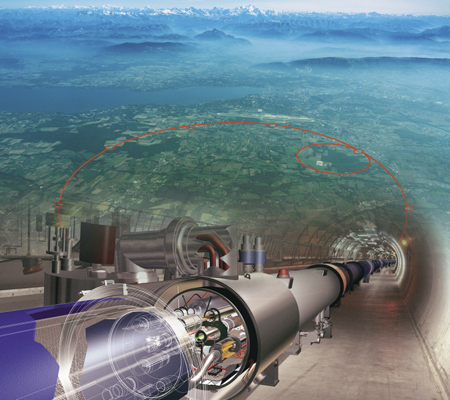
The LHC is very important to particle physicists and astronomers for its the hope this collider can produce the elusive Higg's particle - a particle that is thought to have existed a short time during the Big Bang. This particle is responsible for assigning mass to other particles. The presence of the Higg's will help in proving the Big Bang theory.
And the final story...
Combing 1,000 hours of Hubble Space Telescope time and 400 hours of the XMM-Newton x-ray telescope (and color image data from the ESO's Very Large Telescope, the Canada-France-Hawaii telescope, the Subaru telescope and the Keck Observatory), the Cosmic Evolution Survey (COSMOS) surveyed a 2 square degree area in the constellation Sextans to create a first ever 3 dimensional map of Dark Matter.
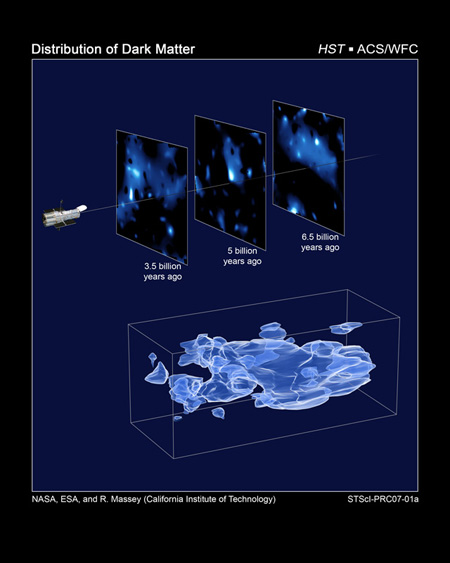
Gravity lensing was the key in construction of the map. By studying data from the Hubble, they gathered statistical data on what lensed galaxy should look like and therefore calculated the strength of the lens. In addition to showing the distribution of Dark Matter, the survey also shows the growth of galaxies over time.
2007 was a great year for astronomy, and I look forward to the coming year - especially with the initial results of the Large Hadron Collider coming in the summer. In addition, the Hubble Space Telescope is due for its final service in May 2008.
Next Post | Previous Post | Back to Top |

